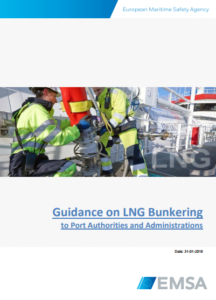LNG as a fuel is one of the possible measures to comply with the 2020 sulphur cap. However, despite its environmental-friendly character, its benefits must be considered along with appropriate environmental practice for LNG bunkering. For this reason, EMSA in its report “Guidance on LNG Bunkering to Port Authorities and Administrations”, provides some points that need to be addressed.
Port Authorities and Administrations (PAAs) have to facilitate the adoption of measures that highlight the environmental potential of LNG as an Alternative Fuel for shipping, while also establishing clear limitations on potential operational LNG emissions.
[smlsubform prepend=”GET THE SAFETY4SEA IN YOUR INBOX!” showname=false emailtxt=”” emailholder=”Enter your email address” showsubmit=true submittxt=”Submit” jsthanks=false thankyou=”Thank you for subscribing to our mailing list”]
LNG as fuel, however, can be an environmental sustainable option, if methane’s GHG potential is properly addressed. PAAs should have provisions not allowing any type of methane release to the atmosphere, with the only exception of emergency situations.
If during LNG operations all operational procedures are followed correctly, then no methane will be released to the atmosphere. For this reason, PAAs must ensure that adequate environmental practice is promoted in all aspects related to LNG storage, distribution, on-site transfer and bunkering.
As a best practice PAAs should require Operators to have Environmental Management Systems in place, certified according to a recognized EMS such as ISO 14001:2015, certified by an independent certification body. An EMS would allow:
- A holistic approach to environmental impacts, where methane release throughout the entire LNG bunkering could be addressed;
- Focusing on only critical aspects and processes;
- Making use of time-tested, mature approaches recognized worldwide;
- Establishment of a positive relationship between PAAs and Operators.
The EMS should be based on a “plan-do-check-act” (PDCA) model of improvement, a process that must be applied regularly to ensure benefits are being realized and the standard is being upheld.
You can see more details in PDF herebelow































































